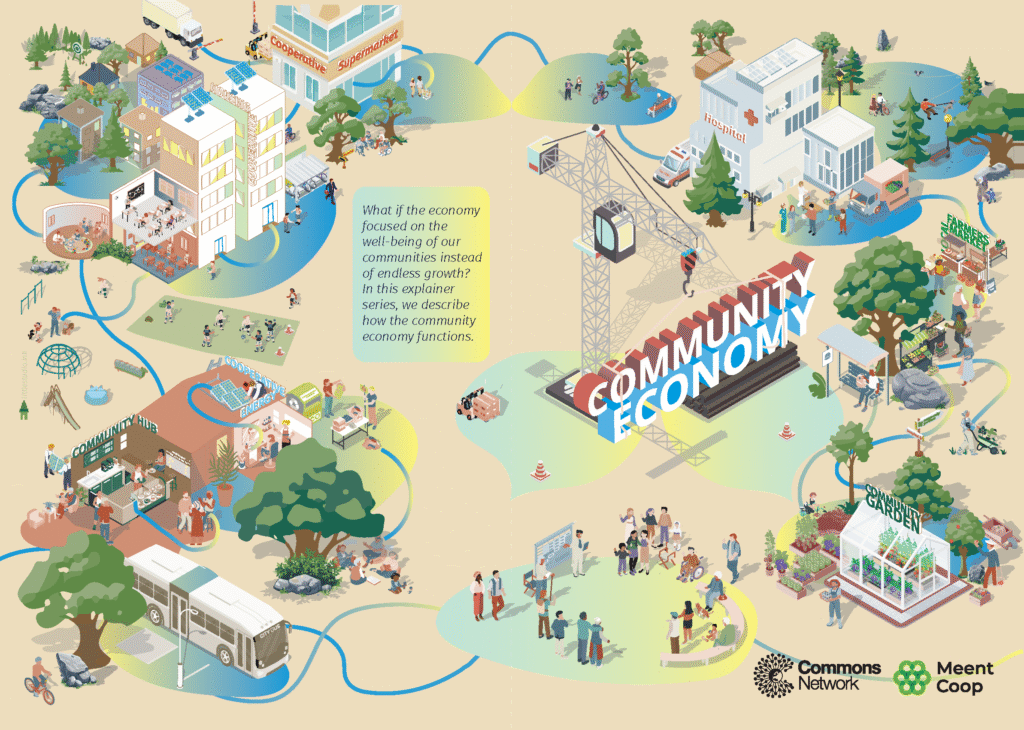For decades, the dominant economic model has been centered on growth and profit – often at the expense of people and the planet. The result? Growing inequality, weakened local economies, and less and less say for ordinary people. Big companies gain power, while local shops, community spaces, and services slowly disappear.
And all the while, we – the people who work, buy, care, and build – rarely have real influence over how the economy is shaped. Or over who benefits from it.
We often talk about distribution – how money is allocated through taxes, subsidies, and support for those in need. But if we truly want change, we need to go a step further. Predistribution is about ensuring a fairer share of power, resources, and opportunity from the start. It requires a fundamentally different economic system – one built on cooperation, shared ownership, and democratic control. Not as an afterthought, but as the foundation.
That’s where the community economy comes in.
The community economy is locally rooted, with shared ownership and decision-making at its core. Where cooperation, care, and sustainability aren’t side issues – they’re the starting point.
What if the economy was in the hands of the community?
Think housing cooperatives with stable rents. Local energy and food initiatives led by residents. Sharing platforms, neighborhood currencies, and businesses where ownership and decision-making are shared.
The community economy shows that the economy isn’t something that just happens to us – it’s something we can shape together. The way we live, work, care, and connect can be different.

In this first explainer in our series, you’ll learn what the community economy is, how it works in practice, and the role that residents, organizations, and governments can play in helping it grow. Not a utopia, but a growing alternative that’s becoming visible in more and more towns and neighborhoods.
Read the explainer and discover the community economy – and how we can build it together.
 ☰
☰